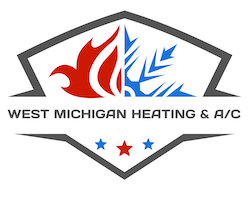
If you’re among the usual American households who pay more than $2,000 every year on utility bills, adding a smart thermostat is a great approach to keep energy bills under control. Although manyresidences have programmable thermostats, yours probably isn’t being made the most of because it’s on “hold” all the time.
When installing a new thermostat, the Nest smart thermostat is one of the most popular options. That’s because it learns your temperature preferences and activities, and then makes an energy-efficient schedule to match. You can also check and raise it from just about anywhere with your smartphone.
For the typical home, Nest says its thermostat saves about 10-12% on heating costs and about 15% on cooling costs. That’s about $131 to $145 saved annually, which helps the product pay for itself quicker than two years. And most utility businesses have rebate programs that help you install a smart thermostat for free or close to it.
When you’re upgrading to a smart home thermostat, you’ll want to be sure it’s compatible with your HVAC system. This is especially true if your equipment is aging. If it’s not, you might have problems, like erratic furnace or air conditioner behavior. That’s why it’s essential to have a expert like West Michigan Heating & Air Conditioning Services help you select a new thermostat and do your smart thermostat installation.
Here’s how to figure out if the Nest is compatible with your HVAC system.
Nest is Compatible with the Majority of Heating and Cooling Systems
The good news is that Nest designed its thermostat to work with many different 24-volt systems, including aging ones.
This covers heating and cooling systems that run on:
- Natural gas
- Oil
- Electricity
Before you get a Nest, you can run the Compatibility Checker to provide an easy transition. Once you’ve double-checked it will work, your Nest will lead you through compatibility and wiring when you set it up.
The Nest Learning Thermostat can run with the widest types of home comfort units, such as heat pumps, furnaces and air conditioners. It also works with highly energy-efficient multistage systems, dual-fuel equipment, humidifiers and dehumidifiers, but you’ll likely need a specialist like West Michigan Heating & Air Conditioning Services to do the in-depth wiring and setup steps.
Does the Nest Have to Have a C-Wire?
If you’ve looked into the Nest, you’ve potentially come across info about the C-wire, or common wire. This wire runs your smart thermostat when it can’t draw adequate power from the other wires.
If you don’t have a C-wire, it’s usually still all right to get a Nest. The company says its thermostats were made to require not much power. Most of the time, this means they can run correctly without this wire.
Have a smart thermostat without a C-wire and running into weird heating and cooling behavior? An HVAC specialist like West Michigan Heating & Air Conditioning Services can put in a C-wire for you.
Our Professionals Make Smart Thermostat Installation Easy
Upgrading your thermostat makes it a snap to stay on top of your heating and cooling costs while keeping your {house|residences|home comfy. If you want to add a Nest smart thermostat to your home, West Michigan Heating & Air Conditioning Services can help you select the ideal model for your needs and then expertly install it. Give us a call at (616) 319-1436 to start today!


